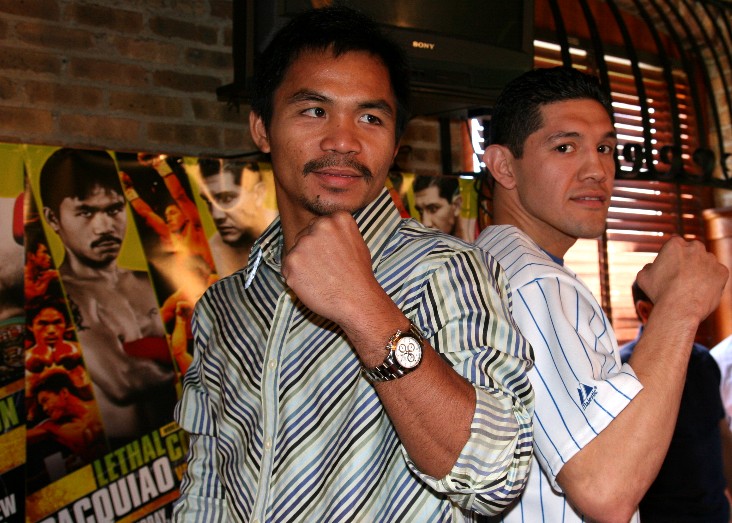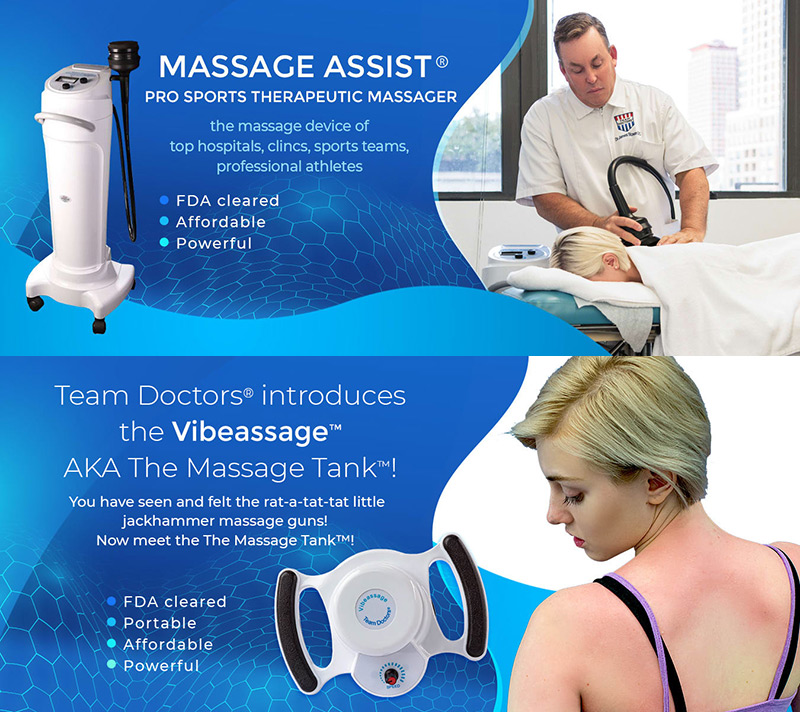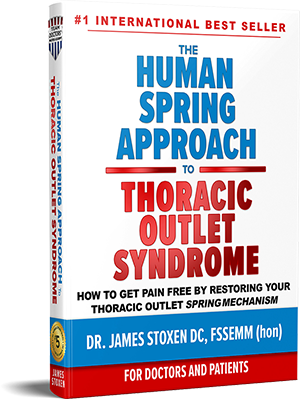Dr. Stoxen Unplugged: Preparing David Diaz to Beat Manny Pacquiao
By Juan C. Ayllon
Original Article: http://www.cyberboxingzone.com/news/archives/00004473.htm

David Diaz (right) enlisted the help of Dr. James Stoxen, DC, to help prepare him for Saturday’s mega-fight and defense of his title against Manny Pacquiao, seen here on the left with him at a presser held in Chicago (photo by Juan C Ayllon)
CHICAGO—With the media hoopla surrounding his upcoming defense against three division champion Manny Pacquiao this Saturday, World Boxing Council Lightweight Champion David Diaz has a secret that may have been overlooked, but may give him that extra pop to get the job done: It’s the nutritional, strength, balance and conditioning help of chiropractor and owner of Team Doctors Sports and Training Clinic, Dr. James Stoxen, DC.
“We had worked together on other fights in the past, for instance the fight against Armando Santa Cruz,” Stoxen says. “He called about eight weeks before the fight and said, ‘I could use your help.’
“Then he came in and we put together a training program that would help him with additional balance, agility, speed and power and also to be more resilient to endure the punishment in the ring better. So, when he won over Santa Cruz with a knockout in the tenth round…I [reminded him]…that every time that he did the strength training with this approach for a fight, that he had a knockout. So, use this as an extra tool!”
Fast forward to preparations for Saturday’s defense versus Pacquiao. “I received a call about six weeks prior to this Pacquiao fight and he said he’d like to come in and have a talk with me, Stoxen said. “And I said come on in, and by the time he walked in the door, I already had all his protein drinks and his supplements ready on the desk. When he walked in, I said, ‘Well, here’s all your drinks, nutrients and supplements for the next six weeks’ and he grabbed the box, took it out to his car, and that was the beginning.”
Speaking by phone from his clinic, Dr. Stoxen, DC talked about this training experience.
“He came in and I went through his body like a fine tooth comb and I checked him very carefully to make sure there were no potential risk factors from his feet all the way to his head, to make sure that all the joints…had good joint play and elasticity, [that] there was nothing that might cause problems during his training. And what little minor things that we found that were insignificant in the scope of things we took care of immediately.
“[Next] I asked him what his strength and conditioning was like and he said that he was happy with it. But I asked him a few questions and I said, ‘Well, the last two fights, you didn’t get a knockout’ and I said that there were a couple exercises in our gym that we felt were key in getting the knockouts. And I said, ‘All I can say is you can’t argue with the statistics—you can’t argue with the results: nine fights, nine knockouts.’
“He said, ‘That’s it! Set me up for Monday. Tell me what to do. I’m ready.’ And that was it.”
“He showed up, ready to go.”
“We had a program set-up for him in advance when he walked in the door. All the exercises that he had to do were set up on a card and also some handouts on some exercises that he did on his own. He has certain strength and balance exercises that he does in our Team Doctors training center and then I made copies of certain agility training exercises that he was to do outside of the gym on the grass during his running and his conditioning.
“So, we set up his training and nutrient regime—you know, types of drinks that keep his nitrogen balance up, protein, levels good—and good diet. A lot more fish, no red meat—fish is high in Omega 3 in the fish oil to keep the…anti-inflammation, pro-anabolic diet.
“[Anti-inflammation pro-anabolic diet is important] because when the body gets hit with sparring punches, the muscles create inflammation. And too much inflammation creates a chain reaction in the body that makes insulin less less sensitive, and that makes the body crave more sweets and carbohydrates. And high insulin levels lower the level of [natural] growth hormone in the body. That’s natural hormone is needed for fat burning, to build lean muscle mass and for repair of damaged tissues during sparring. So, it’s counter-productive for boxing athletes to have too much inflammation in their system.
”But the diet has the ability to lower levels of inflammation or raise inflammation. Certain foods are pro-inflammatory like egg yolks, high glycemic carbohydrates, red meats, and any food that has high levels of a substance called Arachadonic acid.
“Arachadonic acid fuels the inflammatory pathway, and that’s called the “Billion Dollar Pathway” in the pharmaceutical industry. The pharmaceutical industry studies this pathway. High levels of inflammation are damaging to the body. They’re related to increased risk of heart attack, stroke, and even some cancers.
“Also, it creates a catabolic effect on the body—which means breakdown of the body’s tissues. Weakening, as opposed to an anabolic effect, which is build-up or strengthening.
“Foods that are high inflammatory foods, like steaks, are counter-productive in training.
“I read stories of boxers who are interviewed during training saying that they went out and had a STEAK after training which creates a high inflammatory effect on the body, and creates more of a catabolic effect that can weaken the body.
“You definitely don’t recommend that the athlete go out and eat steak after a hard training session. A better idea would be to go out for a good tuna steak or a nice piece of salmon and some colorful vegetables and some good fats and complex carbohydrates.
“[Also], growth hormone is released at night while you’re sleeping, and what it does is repair the tissue that’s been damaged over the day’s events—any type of cuts, internal damage or whatever it may be, and also it helps to burn fat.
“And you want the level of natural growth hormone to be as much as is required to be able to rebuild and repair the muscles that have been exercised that day.
“If you have a high inflammatory diet, it reduces the level of growth hormone and then it can’t repair the muscle tissues. So, achy-ness from sparring, elbow injuries and shoulder pains like that will linger longer and become nagging injuries that will interfere with training. If the diet isn’t right, then the body can’t go through natural repair and regeneration.
“Also, we like to ensure that our athletes aren’t eating things they’re allergic to, as allergic reactions cause weakening to the body, as well. If you’re allergic to something, the body becomes inflamed.
“Those are some of the things that are necessary to evaluate during the training process. And also to make sure the athlete gets good sleep, as during the rest time, the body repairs tissues.
“With David, the training process is different than other athletes, which is great in a positive way. What is good is that he says, ‘Okay, put me on a program and then I’ll just do it.’ And he wants to know what the exercises are and what the proper form and technique is. He doesn’t question each exercise. And he doesn’t cherry pick the exercises that he wants to do and does them only, like other athletes.
“The key is that David doesn’t cherry pick; he just goes right through them with tremendous intensity.
“[Sometimes], I see that in let’s say the shoulder rotary exercise. I’ll say, ‘It looks like you’re throwing that weight around pretty easy.’ That’s all I’ll need to say to him, and he’ll throw three extra plates on there and the speed and power is the same!
“For instance, on the rotary torso [machine]—it’s like you’re sitting down and throwing hooks with 60 lbs. of pressure on your body—he was doing 60 pounds, throwing it around like it was a toy. And I said, ‘put it up to 70.’
“He said, ‘That was really hard.’ And then I said, ‘Did you think this was going to be easy?’ And then he came back and he was on his third set and I told him to put it on 80, and then he did 80 and he didn’t say a word.
“The next week when he came back, he did three sets of 70. In the next few sessions, he did three sets of 80 with huge torque and speed. And then the next few sessions he came back, he did three sets of 90, same speed. Then, the next few sessions he did three sets of a hundred. I have been training athletes for years and I’m not easily impressed. That strength gain was impressive to say the least. He stayed at three sets of a hundred for like three weeks straight, throwing it, pushing it very easily. Why didn’t he go up from 100? He was stacking the machine! It doesn’t go past 100.
“Toward the end, he had to have a tremendous amount of power and torque in his upper body to throw that weight around. He has never been this strong in such an important strength and speed indicator in the past which inspires me and tells me a lot about what his power and speed might be like in the ring on June 28th.”
“He has never trained this hard for any fight in the past. Like I said, in the nine fights he trained this way in the past he has had nine knockouts. So we will see what happens on the 28th. He is definitely ready for this fight!”
***
So, there you have it: Unexpected tools such as anti-inflammation and pro-anabolic diet, nitrogen drinks, rotary torso machines, and a chockfull of modern day mumbo jumbo shoe-horned into David Diaz’s box of tools. Will it be enough to overcome the odds and upend Manny Pacquiao? We’ll see Saturday. But, with Diaz’s heart, skills and determination combined with Dr. Stoxen’s know-how, it’s very possible.
See you at the fights!
Like this article? We will send the next one to you.
Register for our updates below:





